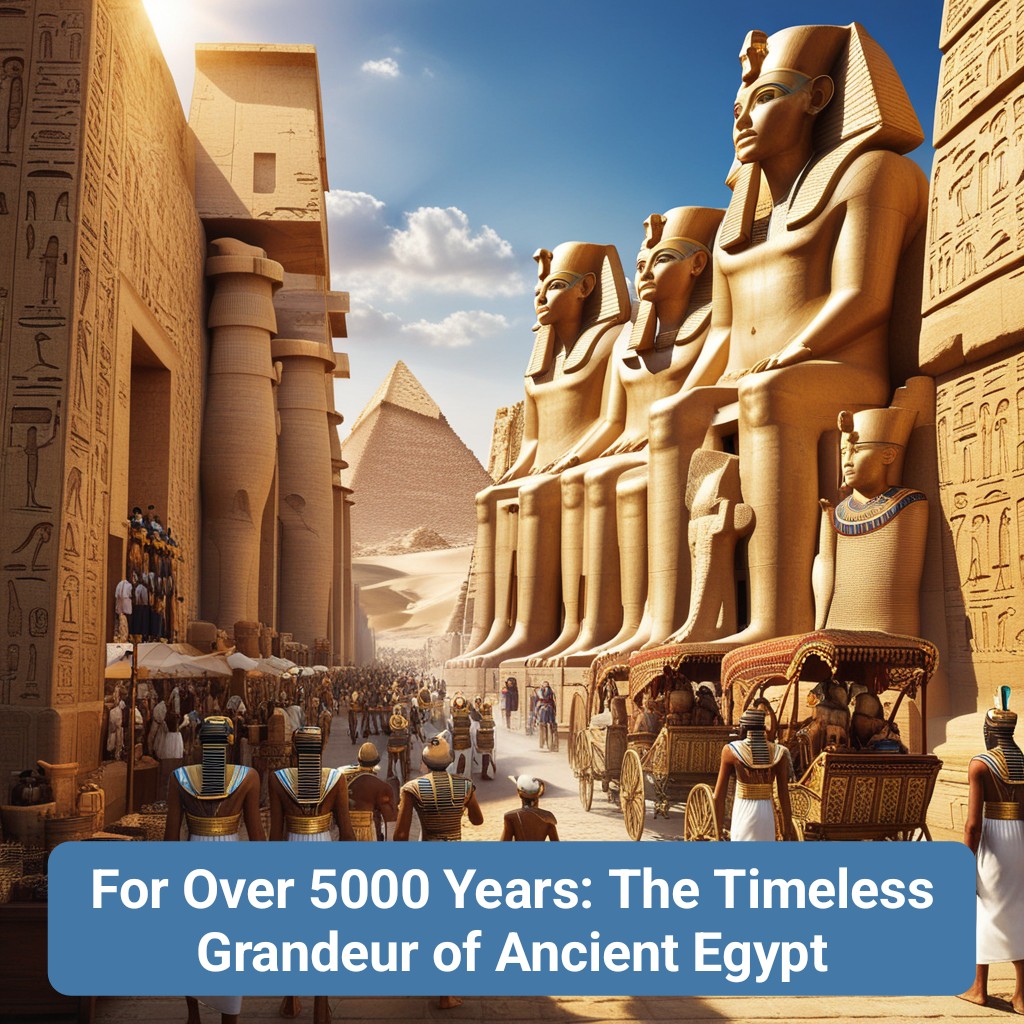
For More Than 5000 Years, Egypt Was Like This
Egypt, the land of the pharaohs, has long fascinated the world with its timeless allure and architectural marvels. For over 5000 years, this ancient civilization flourished along the banks of the Nile, leaving behind a legacy that continues to captivate imaginations today. Let us step into a time when Egypt was at the height of its grandeur, a land of colossal statues, intricate temples, and vibrant culture.

The Land of the Nile
The Nile River was the lifeblood of ancient Egypt, shaping its geography, culture, and economy. Flowing through the arid desert, the river created a fertile valley that supported agriculture and sustained life. Egyptians built their cities and temples along its banks, worshiping the Nile as a divine gift. It brought annual floods that renewed the soil, ensuring bountiful harvests and prosperity.
The Nile was more than just a river; it was a highway that connected cities, carried trade, and united the kingdom. Boats laden with gold, papyrus, and grain floated along its waters, cementing Egypt’s role as a hub of commerce in the ancient world.
The Architectural Wonders
One cannot speak of ancient Egypt without marveling at its architectural wonders. The colossal statues of pharaohs, towering pyramids, and intricately designed temples were not merely structures but symbols of power and spirituality. The pyramids of Giza, built over 4,500 years ago, remain a testament to the ingenuity of ancient architects and the strength of their vision.
Temples like those at Karnak and Luxor stood as centers of worship and community. The grand columns, adorned with hieroglyphics, told stories of gods, battles, and the triumphs of rulers. Statues of deities and kings carved from stone watched over the land, showcasing the skill of Egyptian artisans.
A Vibrant Culture
For millennia, Egypt was a land of innovation and cultural richness. The Egyptians were masterful in art, medicine, astronomy, and writing. Their system of hieroglyphics, often etched onto temple walls, told tales of their gods, rulers, and daily life.
Religion was central to Egyptian life, with gods and goddesses influencing every aspect of existence. The people believed in an eternal afterlife, a belief that inspired their intricate burial practices. The construction of tombs and the elaborate mummification process showcased their dedication to preserving the soul’s journey beyond death.
Life Among the Pharaohs
The people of ancient Egypt lived in a harmonious society structured by class, with the pharaoh at the apex as both ruler and divine representative. Farmers toiled in the fields, craftsmen created stunning works of art, and scribes documented the kingdom’s activities. Women enjoyed a surprising degree of equality, with rights to own property, work, and even rule.
Festivals and celebrations brought communities together to honor gods, celebrate harvests, and enjoy music, dance, and food. The streets of bustling cities were alive with the sounds of markets, laughter, and the hum of daily life.
The Legacy of Ancient Egypt
For more than 5000 years, Egypt stood as a beacon of human achievement, a testament to what civilization could achieve through ingenuity, cooperation, and vision. The grandeur of this ancient land continues to inspire awe, reminding us of its influence on art, architecture, science, and governance.
Today, visitors from around the globe flock to Egypt to see the remnants of this magnificent era. The pyramids, temples, and artifacts serve as a bridge to the past, allowing us to glimpse a time when Egypt was the epitome of human progress and wonder.
In every sense, ancient Egypt was more than just a civilization. It was a phenomenon—a story of resilience, creativity, and grandeur that continues to echo across the sands of time.